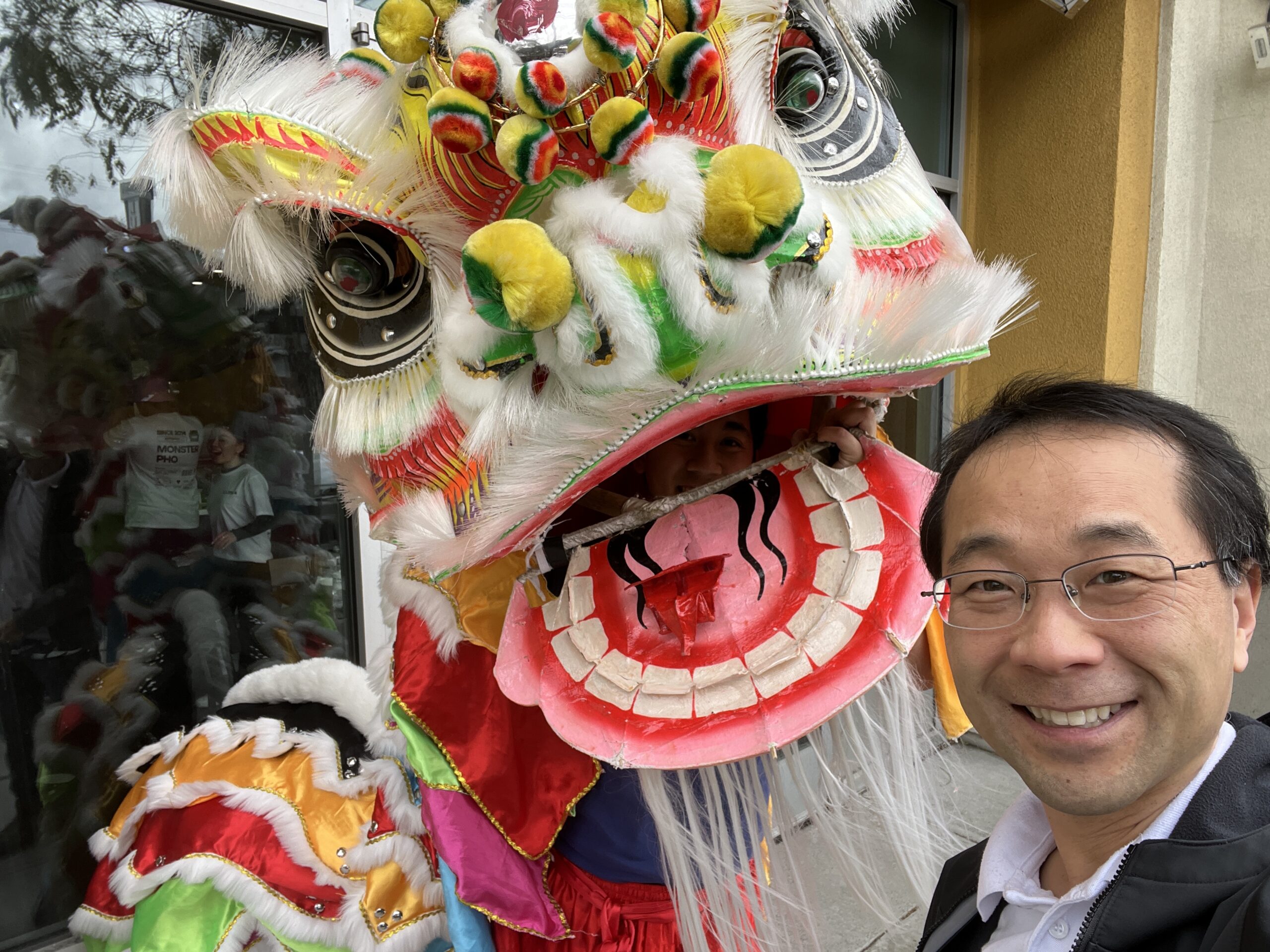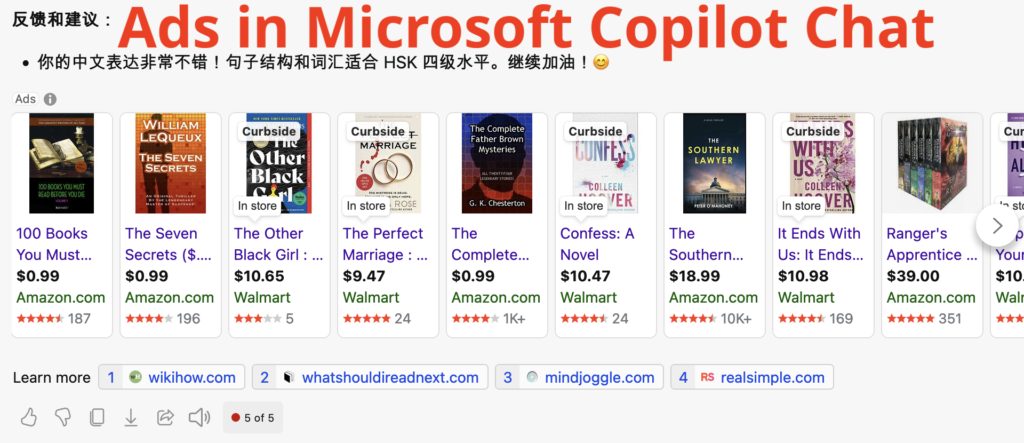How I Use AI For Chinese Language Learning For Free

I’ve always had a fondness for AI machine-based language translation.
When I was a graduate student at Stanford University, my team won the award for the best business plan in our entrepreneurial class. The business plan that we pitched was for an internet-based language translation service during the heady dot-com era when Yahoo! and Google were being launched from the same university. Besides getting the class award from the VC judges, our team made some money selling our business plan to an investor.
Today, I still believe to connect the world, people need to communicate across different languages.
In recent times, AI techniques have utilized LLM’s language capabilities for processing multiple languages. It’s remarkable that the language translation abilities from modern LLMs can not only map words together from different languages, but also connect abstract concepts between different languages, including idioms and colloquial phrases and slang.
Machine translation technology has come a long ways now beyond simple word-by-word translations.
AI offers much potential for language learning and education in general, but also many growing pains along the way. Khan Academy has been reported that its AI-based math tutor doesn’t do accurate math per the WSJ. Duolingo users aren’t necessarily happy about recent product changes, while the company deals with criticisms about letting go workers as it switches to using more AI.
How to Use Free ChatGPT in Language Learning
Did you know that you can use ChatGPT to learn a new foreign language?
Recently, I’ve been using ChatGPT to practice Mandarin Chinese.
I’m not a native Mandarin speaker. As a kid, I grew up speaking Shanghainese with my family and relatives, along with a mish-mash of other Chinese dialects like Cantonese. All my formal education had been in the United States in English, with some classes in Spanish and French, but no Chinese.
For a few months, I did take a Mandarin class at a Saturday morning Taiwanese Chinese school in the San Francisco Bay Area while my sons learned Chinese Bopomofo phonetics in a nearby classroom. Suffice to say that my Chinese language abilities have been elementary and even confused with all these various dialects.
I stayed learning Mandarin Chinese off and on through the years through a variety of ways. A few years ago, I found the Hello Chinese app. For learning Chinese, I liked the Hello Chinese app much more than Duolingo. Hello Chinese was specifically built for learning Chinese, whereas Duolingo was a generic platform for learning multiple languages that missed some Chinese-specific features. I’ve been a paid subscriber of the Hello Chinese app continuously for several years now. I use it in conjunction with the Pleco Chinese Dictionary app that’s also a gem.
Using these learning methods plus some traditional methods, I passed the official Chinese HSK level 3 test in 2021. I rushed to take the more challenging HSK level 4 test a few months later but did not pass. I was rushing because I wanted to finish level 4 before the HSK leveling was scheduled to get overhauled with new levels and new vocabularies. However, it was unrealistic for me to master level 4 in the time frame that I gave myself, with my limited self-study methods.
Since then, I had finished all the lessons in the Hello Chinese app through HSK 4. I then let my Chinese learning lapse for a few years until recently. Today, I still use the app for review. Their SRS spaced-repetition system helps with retention in an efficient way. The premium subscription has a ton of rich dialogs and native speaker recordings that I’m still learning from.
However, an app like Hello Chinese is not sufficient for full language mastery. As the app is based primarily around flash cards and multiple choice questions, then users can get very good with responding to flash cards and multiple choice questions. Flash cards and multiple choice questions are not the same as real conversational dialogs though.
Full language mastery requires dialogs. Conversational dialogs have a bit of randomness and human unpredictability. Dialogs require different parts of the brain to be exercised with new neural pathways compared to responding to flashcards and reading. Fortunately, I’ve found that ChatGPT can conduct Chinese chat dialogs.
Practice Dialogs With AI Through ChatGPT
In February, I had been experimenting with ChatGPT to aid in my learning of Chinese. ChatGPT can carry on chat dialogs in Chinese, not just English. Although LLMs often use English-centric training sets, ChatGPT’s abilities with Mandarin Chinese are sufficient for my purposes.
 Jimmy’s ChatGPT chat session
Jimmy’s ChatGPT chat session
Here’s what I had been doing. At the end of the day, I login to the ChatGPT mobile app, and start a new chat session with my prompt (see below).
Help me practice conversational Mandarin through a simulated text message dialog. Use vocabulary up to HSK level 4. At the end of our dialog, provide the the full transcript of our Mandarin dialog with English translations, along with your feedback and suggested corrections of my Chinese. When you are ready, I will begin the dialog.
On my mobile device, I switch to the Simplified Chinese keyboard and then start a Mandarin Chinese dialog with ChatGPT. The chat can cover the usual topics of weather or food or books or anything else in the HSK vocabulary sets, relevant to my actual day.
At the end of the dialog, I ask ChatGPT to give me feedback and corrections for my Chinese. ChatGPT is always polite and patient in offering feedback and corrections without seeming judgmental. I then ask for the English translation of our chat to confirm my understanding of both sides of the conversation.
I’m amazed that ChatGPT seems smart enough to understand my Chinese intent even when I use the wrong word or grammar. For example, here I was trying to be colloquial by asking if ChatGPT understood me, but I used the wrong word:
明吧? (míngba?) should have been 明白?(míngbai?)
And it understood my intention to say the word “polite” when I picked a wrong similar-sounding word.
你是很客次。Nǐ shì hěn kè cì (wrong)
你是很客气。Nǐ shì hěn kèqì (corrected)
By comparison to ChatGPT (chat session), I also experimented with the exact same Chinese conversations with Bing Copilot Chat, Google Gemini, and Anthropic Claude.ai back in February 2024. I found that these other chatbots were unsuitable for what I wanted to do in my language learning use case.
- Bing Copilot Chat: erratic in behavior, glitchy UI, inserts ads into the middle of the practice conversation, and made excuses as an AI chatbot.
- Google Gemini: overly verbose with showing off its knowledge from its search index, ignoring my request for a simple simulated text message chat. (chat session)
- Anthropic Claude.ai: it didn’t seem to understand the intent of the practice conversation, as it simply echoed back my Chinese text, along with its corrections, or else the responses were incomplete.
None of these other chatbots worked as fluidly for my use case as did regular ChatGPT with GPT-3.5-turbo.
 Microsoft Copilot Chat inserts ads in the middle of the Mandarin chat session to sell books
Microsoft Copilot Chat inserts ads in the middle of the Mandarin chat session to sell books
For being a language learning partner, the free ChatGPT version seemed to be best suited for my use case. It did not insert ads into the conversation like Microsoft Bing did. It did not try to impress me as a “know it all” with its search index results like both Microsoft Bing and Google Gemini did. It did not give me incomplete partial responses or unfriendly corrections like Anthropic Claude.ai did.
ChatGPT seemed to be the best trained chatbot, robust enough for my use case. It seemed to implicitly understand what I needed more consistently than the other chatbots. It didn’t try to assert its own special agenda with ads or search results.
I’ve observed a few other differences between ChatGPT and these other chatbots for Chinese language learning. I will publish the full comparison separately in the future.
My Recommendations
For now, if you want to augment your language learning with AI for free, consider using ChatGPT.
For me, as a casual learner, I’ll keep working on getting more comfortable with online Chinese text-based chat practice with ChatGPT. After getting some proficiency that way, then I’ll consider getting a human tutor to get more realistic conversational practice.
Based on my user experience, there’s a business opportunity for a company to come up with a language-teaching conversational chatbot that works well, that does not try to upsell with ads within the conversation, and that does not try to impress with its search index. And of course, users want it all for free too.
In any case, fast continuous learning is a prerequisite for agility, which is one of the top 5 valuable skills to future-proof your career. AI-enabled learning methods promise to accelerate learning for all of us!
Are you practicing a new language too? Are you using AI chatbots to help you learn new topics and gain new skills? Let me know if you do and we can compare our experiences.
Originally published at aijimmy.com. Featured photo by Jimmy Wong.
We respect your privacy. Unsubscribe at any time.









